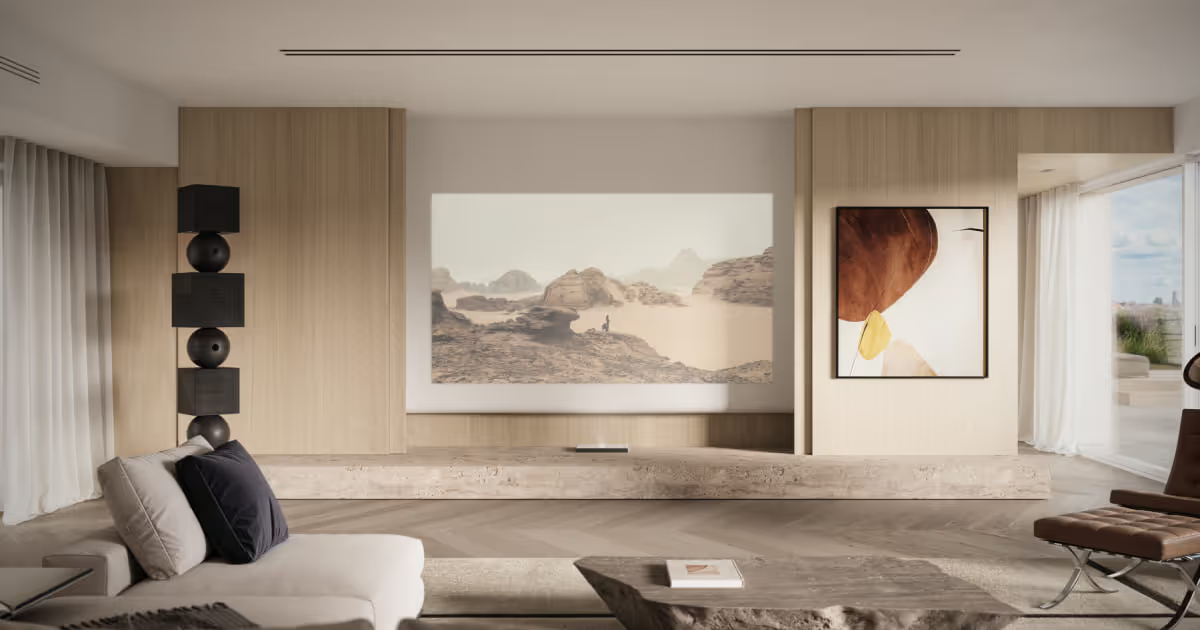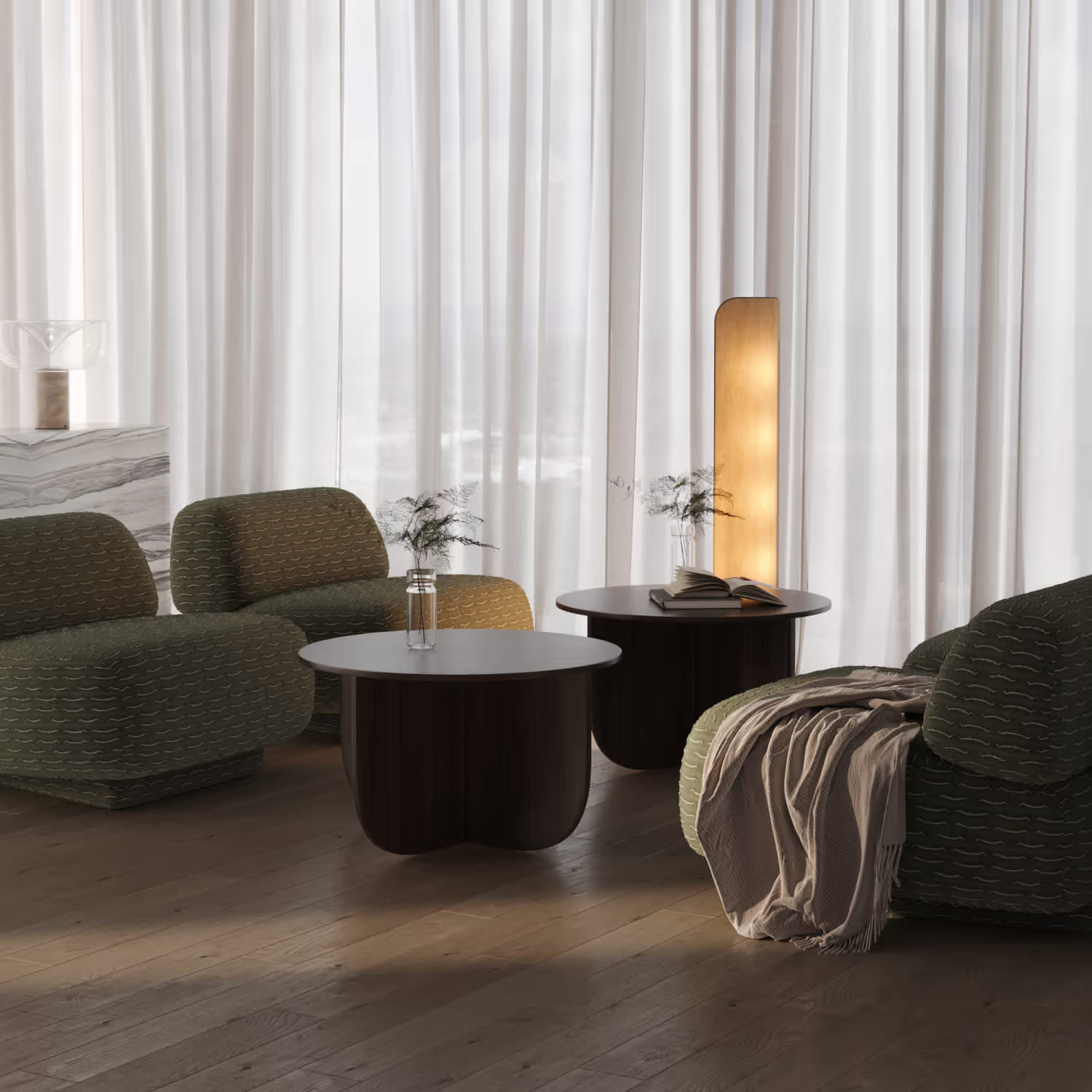Imagine closing $15 million in hotel room sales six months before breaking ground. Picture investors writing checks based on virtual walkthroughs of spaces that exist only as architectural plans. Where photorealistic 3D rendering has become the bridge between vision and revenue, enabling developers to sell rooms before they're built.
The pre-construction sales challenge has plagued hotel development for decades. How do you convince someone to invest in or book a room that doesn't exist? How do you communicate the feeling of luxury, the quality of finishes, or the view from the balcony when all you have are floor plans and elevations? The answer lies in photorealistic visualization technology that's revolutionizing how hotels are funded, marketed, and sold before construction even begins.
TL;DR Summary
• Virtual tours increase hotel bookings by 48%, enabling pre-construction sales that weren't possible before (Best Western)
• Properties using advanced visualization achieve 3-7% price premiums and sell 20% faster, even before groundbreaking (Goproptech)
• BIM-enabled projects reduce construction change orders by 15-30% through clash detection (BIM coordination)
• One NYC development closed $15M in pre-construction sales using photorealistic renderings (conversion rates)
• 70% of buyers make purchase decisions based on virtual tours before visiting physical properties (Cornell research)
The Pre-Construction Sales Revolution
Why Selling Before Building Changes Everything
Pre-construction sales fundamentally alter hotel development economics. Instead of waiting years for revenue, developers can:
- Secure financing with proven buyer interest
- Reduce carrying costs and construction loans
- Validate market demand before major capital expenditure
- Adjust designs based on early buyer feedback
- Generate marketing momentum years before opening
Properties using advanced visualization achieve 3-7% price premiums and 20% faster selling cycles (Goproptech).
The Psychology of Buying What Doesn't Exist
Having worked as an interior architect on both large-scale and boutique hotels from concept to completion, I understand the psychological barrier of investing in something intangible. Buyers need emotional connection, not just rational information. They need to feel the morning light in the suite, understand the flow from bedroom to bathroom, and imagine themselves in the space.
Cornell University's research found that virtual reality significantly reduces dependency on reviews for booking decisions (Cornell research). This means properties can build reputation and drive sales before having a single guest review - a game-changer for pre-construction sales.
The Complete Photorealistic Rendering Process
Phase 1: Strategic Planning for Pre-Sales Success
Before creating a single rendering, successful pre-construction campaigns require strategic foundation:
Market Positioning Analysis
- Identify target buyer demographics and psychographics
- Analyze competitive pre-construction offerings
- Define unique selling propositions that renderings must communicate
- Establish price points that visualizations must justify
Visual Sales Strategy
- Determine which rooms/suites to render first (typically penthouses and signature suites sell first)
- Plan rendering release schedule aligned with sales phases
- Create visual hierarchy (hero shots for marketing, detail shots for closing)
- Design virtual tour pathways that mirror buyer decision journey
Phase 2: Creating Sales-Driving Visualizations
The difference between a rendering and a sales tool lies in emotional resonance. Our photorealistic architecture approach focuses on elements that trigger purchase decisions:
The Hero Suite Strategy
Start with your most expensive rooms. When working on the Marriott project last March, we learned that rendering the premium suites first creates a halo effect. Once buyers see the penthouse quality, they assume similar attention throughout the property. We rendered their lobby, lounge, premium rooms, and corridors, and the general management approved everything with minimal tweaks. The final built spaces looked nearly identical to our visualizations.
Material Authenticity That Sells
Real materials behave differently than digital samples. We always request physical material samples or visit design offices in person. Those small online swatches never tell the full story of how Italian marble catches morning light or how handwoven textiles add warmth to a space. This authenticity translates directly to buyer confidence.
Lifestyle Visualization
Don't just show rooms—show experiences. Include subtle lifestyle cues:
- Morning coffee on the balcony with city views
- Evening ambiance with carefully planned lighting
- Spa bathrooms that promise relaxation
- Work spaces that appeal to digital nomads
Phase 3: Building the Pre-Sales Machine
Virtual Tours That Convert
Best Western's study documented 48% booking increases from 360-degree virtual tours (booking increase). For pre-construction sales, this translates to:
Interactive Floor Plan Integration: Buyers can click through units, comparing views, layouts, and finishes. This self-guided exploration builds ownership before purchase.
Day/Night Transitions: Show how spaces transform throughout the day. Morning light for early risers, sunset views for romantics, city lights for night owls.
Customization Previews: Let buyers visualize upgrade options—different furniture packages, finish selections, or layout modifications.
The Investment Package Visualization
Pre-sales visualization for investor buyers requires additional elements:
- Revenue-generating spaces (restaurants, spas, event venues)
- Operational flow visualizations
- Market positioning comparisons
- ROI projection visualizations
Technical Excellence in Pre-Sales Rendering
Achieving Photorealism That Closes Deals
The biggest mistake we see in hotel visualization is treating renderings like technical drawings rather than emotional experiences. Many firms create images that look like CGI—technically correct but missing the soul that makes buyers reach for their checkbooks.
Camera Work That Sells
We maintain camera angles that mirror human perception and luxury real estate photography. No ultra-wide distortions that make rooms feel larger than reality—this breaks trust when buyers eventually see the built space. Instead, we use:
- Eye-level perspectives that feel natural
- Compositions that guide the eye to premium features
- Depth of field that creates intimacy
- Lighting that flatters without deceiving
Brand Standards Integration
Last March, we learned an important lesson working with Marriott. After multiple rounds of lighting revisions, we discovered they had specific brand standards affecting how spaces should feel. That experience transformed our process. Now we capture everything from pillow styling preferences to specific brand merchandise placement. For pre-sales, this brand consistency helps buyers understand exactly what level of quality they're investing in.
Building Information Modeling for Accuracy
Modern hotel construction leverages BIM technology for unprecedented accuracy. BIM-enabled projects reduce construction change orders by 15-30% through pre-construction clash detection (BIM coordination). For pre-sales, this means:
Guaranteed Accuracy
When renderings are based on BIM models, buyers can trust that what they see is what they'll get. Spatial relationships, ceiling heights, and structural elements are all precisely represented.
Real-Time Updates
As designs evolve during pre-sales, BIM integration allows rapid re-rendering of affected spaces, keeping marketing materials current without starting from scratch.
The Pre-Sales Playbook
Staging Your Virtual Sales Center
The Digital Sales Gallery
Replace traditional sales centers with immersive digital experiences:
- Large-format displays for group presentations
- VR stations for individual exploration
- iPad-guided tours for remote buyers
- Projection mapping for scale understanding
The Progressive Reveal Strategy
Don't show everything at once. Our most successful pre-construction campaigns follow this pattern:
- Teaser Phase: Exterior renderings and lifestyle imagery build anticipation
- Launch Phase: Hero suites and signature spaces create desire
- Expansion Phase: Full room inventory becomes available
- Customization Phase: Buyers personalize their selections
- Closing Phase: Construction progress renderings maintain momentum
Converting Interest to Deposits
The Moment of Truth
The most rewarding part of this work comes during those first reveal moments. When clients see their projects visualized for the first time, their reactions are genuine and often emotional. We've had clients tell us that seeing the renderings "made their week." This same emotional response happens with buyers—it's the moment abstract interest becomes concrete desire.
Virtual Staging for Different Buyers
Create multiple versions targeting different demographics:
- Young Professionals: Modern, minimalist, tech-integrated
- Families: Warm, functional, safety-focused
- Empty Nesters: Luxurious, low-maintenance, socially oriented
- Investors: Versatile, durable, revenue-optimized
Overcoming Pre-Construction Objections
Common buyer concerns and how visualization addresses them:
"How do I know it will really look like this?"
Our renderings maintain photographic accuracy. When the Marriott hotel was completed, the built spaces looked nearly identical to our visualizations. We document this accuracy with before/after comparisons from previous projects.
"What if the view gets blocked?"
We photograph actual site contexts and research approved developments nearby. Renderings include accurate surroundings, not fantasy landscapes.
"The space might feel different in person
"VR walkthroughs provide spatial understanding that flat images can't convey. Buyers experience room flow and proportions before committing.
Case Studies in Pre-Sales Success
The Boutique Hotel Revolution
Working with boutique properties taught us that storytelling matters more than square footage. The Kenrick Hotel project succeeded by focusing on experiential renderings—morning yoga on the rooftop, intimate dinners in the restaurant, quiet moments in the library. These lifestyle visualizations drove 40% of units to sell before construction started.
The Branded Residence Advantage
Branded properties like our Marriott projects benefit from established trust. Buyers know the quality standards, so renderings focus on location-specific advantages and unique design elements rather than proving basic quality. This allows for more sophisticated visualization strategies focusing on lifestyle and investment benefits.
The Transformation Success Story
Seven out of ten clients come to us after being disappointed with other renderers' work. One developer had spent months with renderings that looked impressive but felt artificial. We re-rendered their entire project focusing on photographic accuracy and emotional authenticity. The result? They sold 60% of units within three months of launching with our new visualizations.
Conclusion
The ability to sell hotel rooms before they're built represents more than technological advancement—it's a fundamental shift in development economics. With virtual tours driving 48% booking increases, properties achieving 20% faster sales cycles, and developers closing millions in pre-construction sales, the evidence is overwhelming: photorealistic visualization has become essential for competitive hotel development.
The question for developers isn't whether to invest in pre-construction visualization, but how quickly they can implement these strategies. Those who master the art of selling experiences that don't yet exist will define the next generation of hospitality development.
Throughout my journey from architecture to visualization, I've seen too many good projects die from poor visual representation. Today, we have the tools to bring any vision to life before a single brick is laid. As we often tell our clients: You can trust us. We know what we're doing, and we're the best at it.
Let's transform your hotel concept into pre-construction sales success. Ready to sell rooms before they're built? Contact us to start your visualization journey.
FAQ
How early should we start creating renderings for pre-construction sales?
Begin visualization development 12-18 months before groundbreaking for optimal results. Start with strategic planning and concept renderings, then progressively develop hero suites, amenity spaces, and full inventory visualizations. Early rendering development allows time for market testing and iteration based on buyer feedback. Our Marriott project succeeded because we had months to refine the visualizations based on brand standards and buyer preferences. The investment in early visualization typically returns through faster pre-sales velocity and higher price points.
What's the minimum rendering package needed for pre-construction sales?
A successful pre-construction sales package typically includes: 2-3 exterior views showing the property in context, 5-7 hero interior spaces (lobby, restaurant, premium suite, standard room, amenity), 3D animation walkthrough of key sequences, and interactive floor plans for unit selection. Virtual tours increase conversion by 48% (booking increase), making them essential rather than optional. Focus budget on spaces that drive purchase decisions—premium units, signature amenities, and unique selling points.
How do we handle design changes after pre-sales begin?
Design evolution during pre-construction sales requires careful management. Document all renderings with version control and disclaimer language about potential modifications. When changes occur, update visualizations quickly and communicate transparently with buyers. We've found that buyers accept minor modifications when they understand the reasoning. Major changes might require re-approval or deposit refunds. BIM integration (BIM coordination) enables rapid updates, keeping sales momentum despite design evolution.



